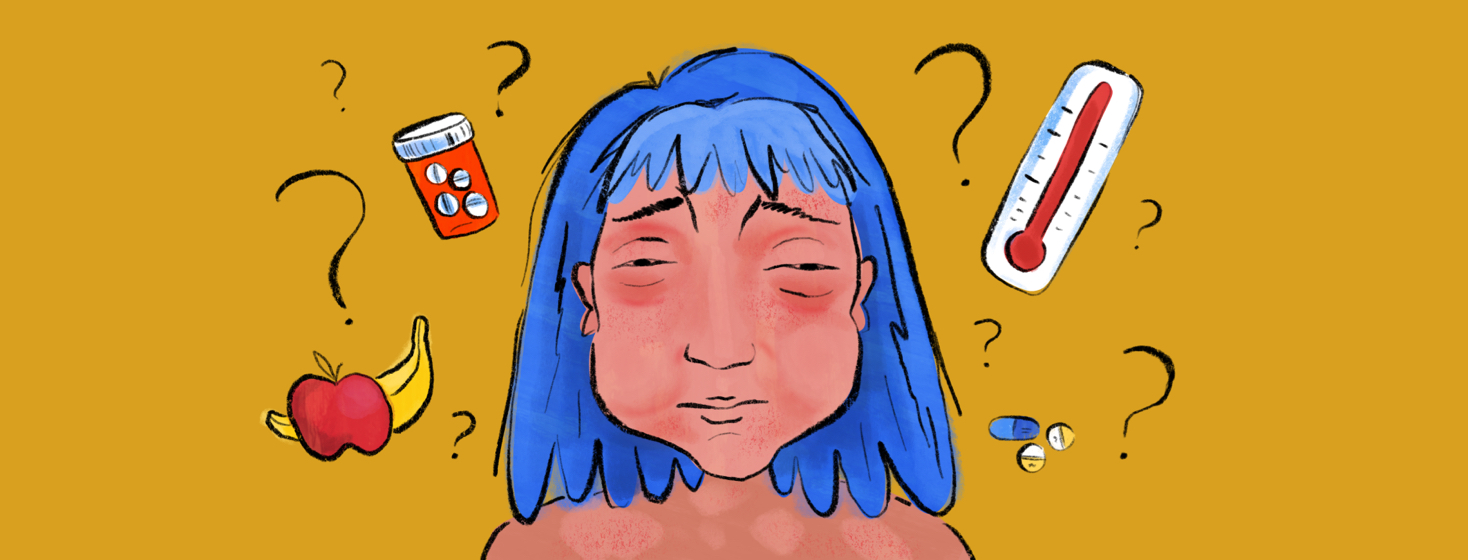The First Time I Noticed My Hives
I still remember the first time my hives developed. It wasn’t actually the hives, but my face starting to swell. I was an inpatient at a hospital in Philadelphia getting intensive treatment for my chronic migraines. I had just eaten lunch when I noticed it. While I do have a few food allergies, nothing I had eaten would have caused the kind of symptoms I was having. I quickly called for the nurse, who rushed in with some Benadryl. It took about an hour, but my symptoms started to wane. But if it wasn’t the food I had eaten, what was it?
A growing list of allergens
I had been started on a couple of new medications to help treat my migraines. Of the two I had been started on, one, in particular, stood out as possibly causing the reaction. That medicine was immediately removed from my medication list and added to my growing list of allergens. It took a week or so for all of the swelling in my face to go down, but it finally did. With the seeming correlation between stopping that medicine and my symptoms resolving, my doctors and I thought we had figured out what the problem was. I finished the treatment program for my headaches and went home without any further issues.
Swollen face
A month or so later, my face became very red and swollen again. What in the world? I thought we had figured out what had caused it the first time. Well, apparently not. I headed to the ER with my swollen face.
The doctors took a thorough history. Since I had been started on two meds at the same time, perhaps it was in fact the other medication that had caused the issue all along. My symptoms improved and I was discharged from the emergency room with an epi-pen and instructions to stop the other medicine the headache specialists had put me on.
The ER staff also told me not to try to go back on the first medicine we had originally thought was the problem, because it might have contributed to the reaction. Maybe it had nothing to do with it (hint: it didn’t), but safer to stay away from both medicines for the time being.
Temporary remission
My face continued to swell periodically over the next few months. Sometimes my face would be so swollen that I couldn't see out of my eyes, other times my face would be just puffy enough for me to notice and no one else. The “good” thing about hive-associated angioedema is that it usually does not cause the airway to swell and become restricted. But of course, we didn’t know the cause of the facial swelling at that point.
During my first summer with hives, my facial swelling seemed to be heavily associated with the high temperatures, and any time my body overheated, my face swelled up. Having seemingly identified the cause of my facial swelling, I was happy for the start of fall, when my swell, incidentally, stopped. Little did I know at the time that I had only gone into temporary remission and my hives would return a few months later.
Do you remember the first time you noticed your hives? Let us know in the comments.

Join the conversation